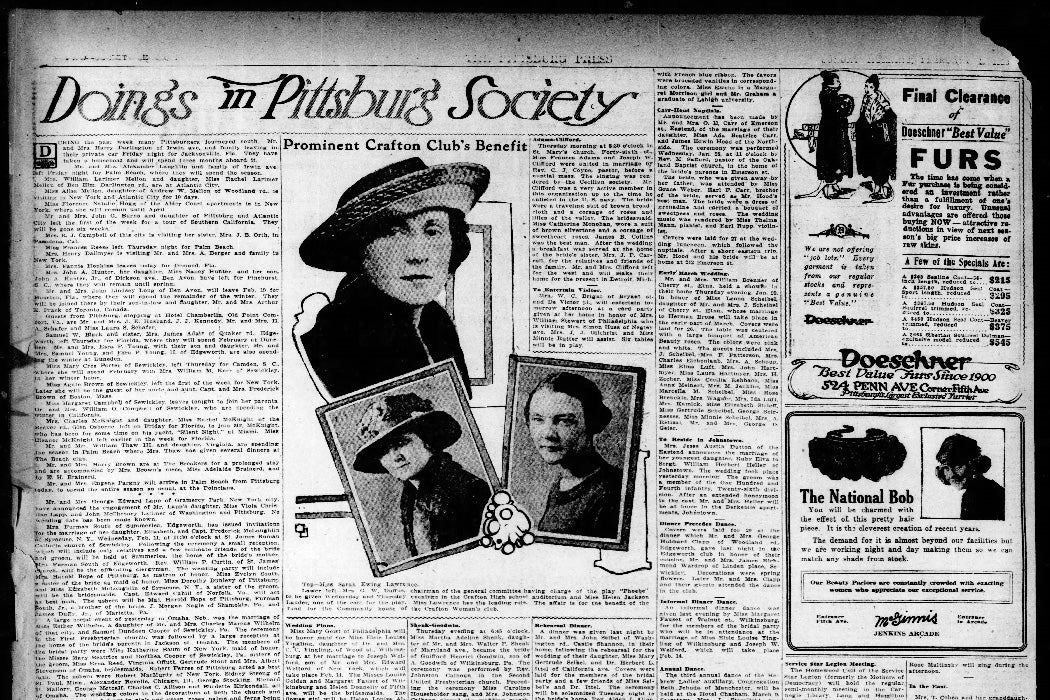By the 1930s, American newspapers were preoccupied with getting more women readers. Advertisers were “transfixed by the woman consumer” as scholar Julia A. Golia puts it, and as a result, newspapers “feminized both their content and business strategies” during the first decades of the twentieth century. The “Woman’s Page”—which often grew into multi-page sections—helped transform the newspaper industry in that thriving era of print.
“Newspaper publishers learned to incorporate the values of the advertising industry into their business and editorial practices. Publishers did so by gendering the content, structure, and revenue-building strategies of their papers.”
The women’s section has long been “dismissed as frivolous and banal,” as well as sexist, made up of “serial fiction; beauty; housekeeping, and parental advice.” But, argues Golia, these sections also “fostered experimental and participatory features even as they reinforced traditional gender norms.”
Golia continues: the “growth of the woman’s page and the gendering of publisher’s revenue-strategies transformed the reader’s relationship with her daily paper in ways both limiting and liberating.”
Limiting ways included the reinforcement of “traditional homogenous standards of femininity” and the portrayal of the “ideal American woman” as someone who was “white, married, financially comfortable, and rooted in her home.” And the very idea of a woman’s page “seemed to create a ‘separate sphere’ in the daily paper”—a continuation of Victorianism. Publishers, after all, “made few marketing attempts to appeal to women who turned to newspapers for political and economic news.”
More liberating aspects of the woman’s page were the “emergence of new features, genres, topics, and visual motifs.” For example, Golia points to the interactive columns that welcomed reader response. Recipe exchanges, advice columns, and other interactive features let “women share their own opinions and shape the topics and tone of the woman’s page, demonstrating the democratic and dynamic potential of the newspaper.”
Not least of the liberating side was the hiring of “more women journalists to provide relatable perspectives for female readers—though sexism remained widespread through the industry, especially in ‘hard news’ departments.” (One of the reasons the woman’s page has often been dismissed is that women breaking into the newsroom, the sports section, the foreign desk, etc., has dominated the history of women in journalism.)
All this was inseparable from the commercialization of news. Before the Civil Wars, newspapers were partisan, party-sponsored sheets which aimed to rally voters—none of them female. In the later nineteenth century, newspapers became commodities, funded by advertisements, primarily, and subscriptions. By 1910, women were the center of advertising strategies. By the 1930s, “Mrs. Consumers” were believed to be key to the future success of the American economy.
Weekly Newsletter
Golia’s analysis of thirty-one mass circulation daily newspapers between 1895 and 1935 shows the substantial growth of the woman’s page during this time, from just a few inches to whole sections, with an expanding roster of features. As an example, a week of the Indianapolis Morning Star in 1923 offered information on:
“Beauty techniques, women’s health, psychological theories of child rearing, etiquette, housekeeping and cleaning, cooking, interior design, needlepoint and sewing, marital relations, national celebrity news, political issues pertaining to women, local society gossip, and club news.”
Some of these topics reflected “a growing frankness about health and sexuality and a willingness to discuss women’s bodies in public.” Even when stressing traditional gender roles, these sections could hardly help but reflect changing social and cultural mores about gender.
By the 1960s, transformative social changes and the corporate conglomeration of newspapers began to render “the woman’s page” obsolete. These sections often evolved into Style or Lifestyle pages, less gendered, but still driven by the consumerist ethos of advertising-funded media.







